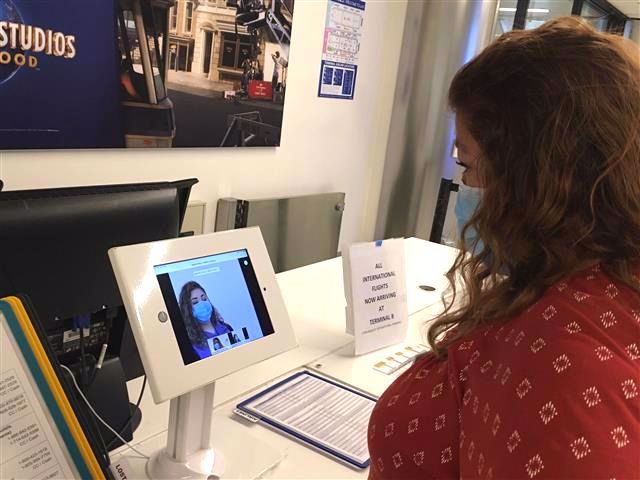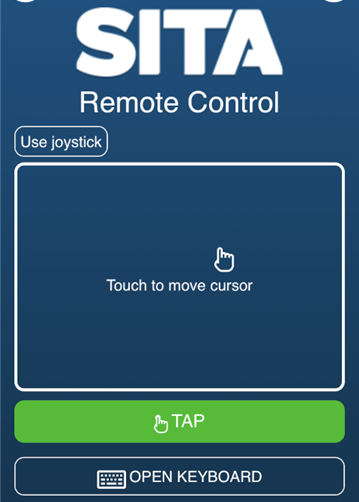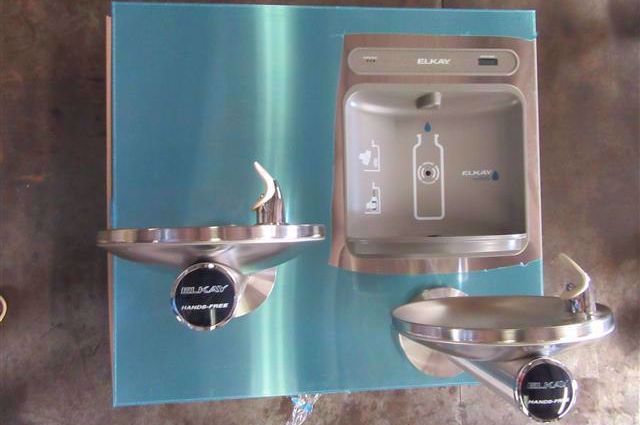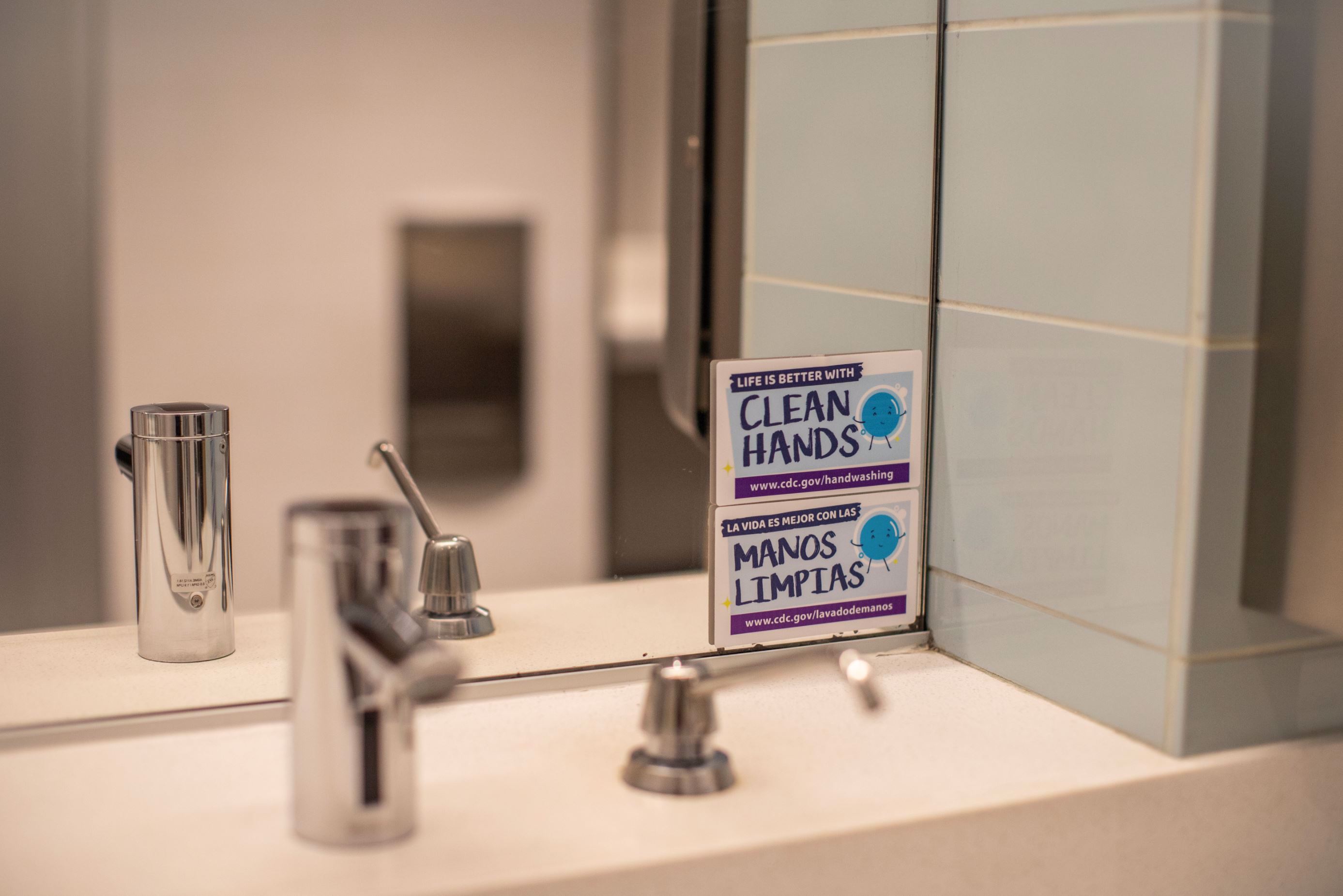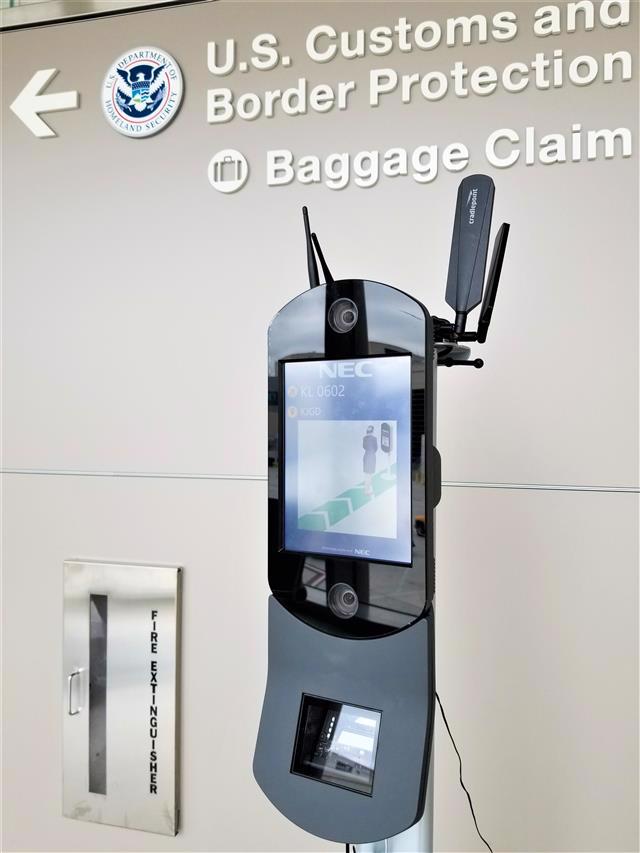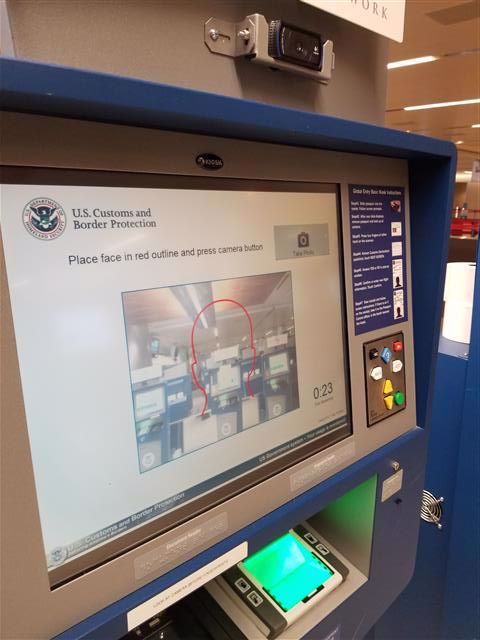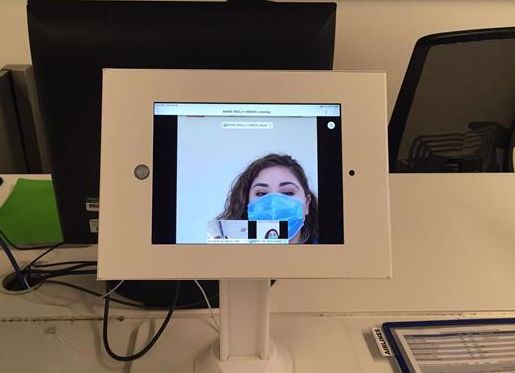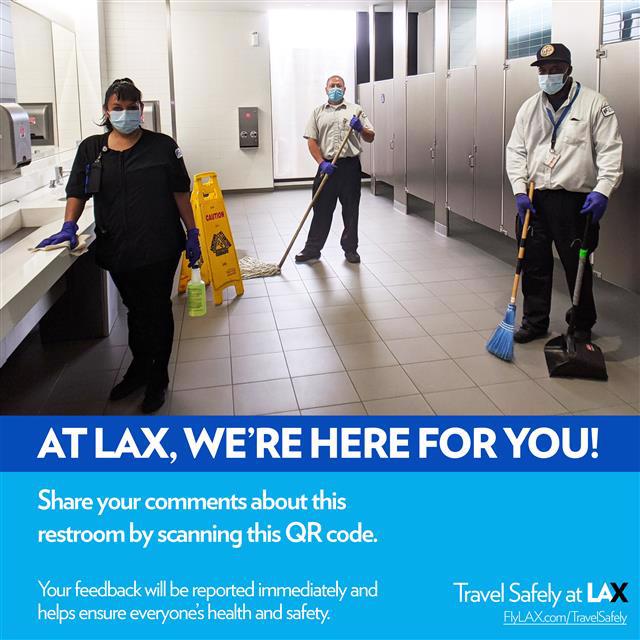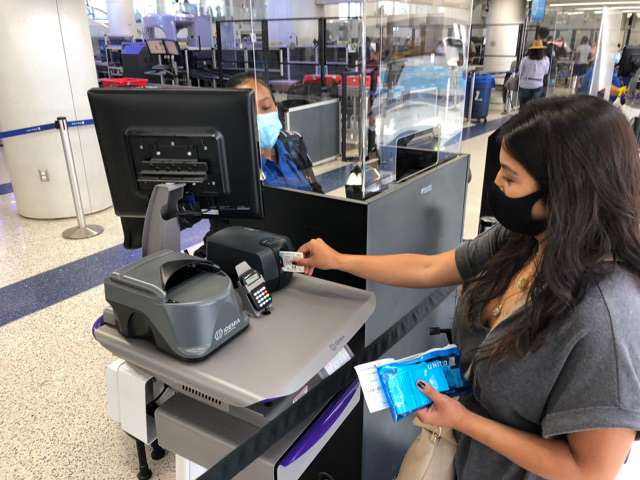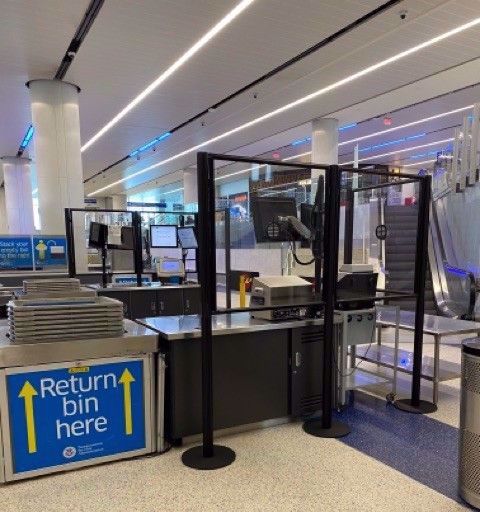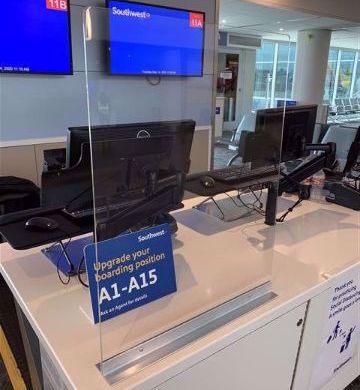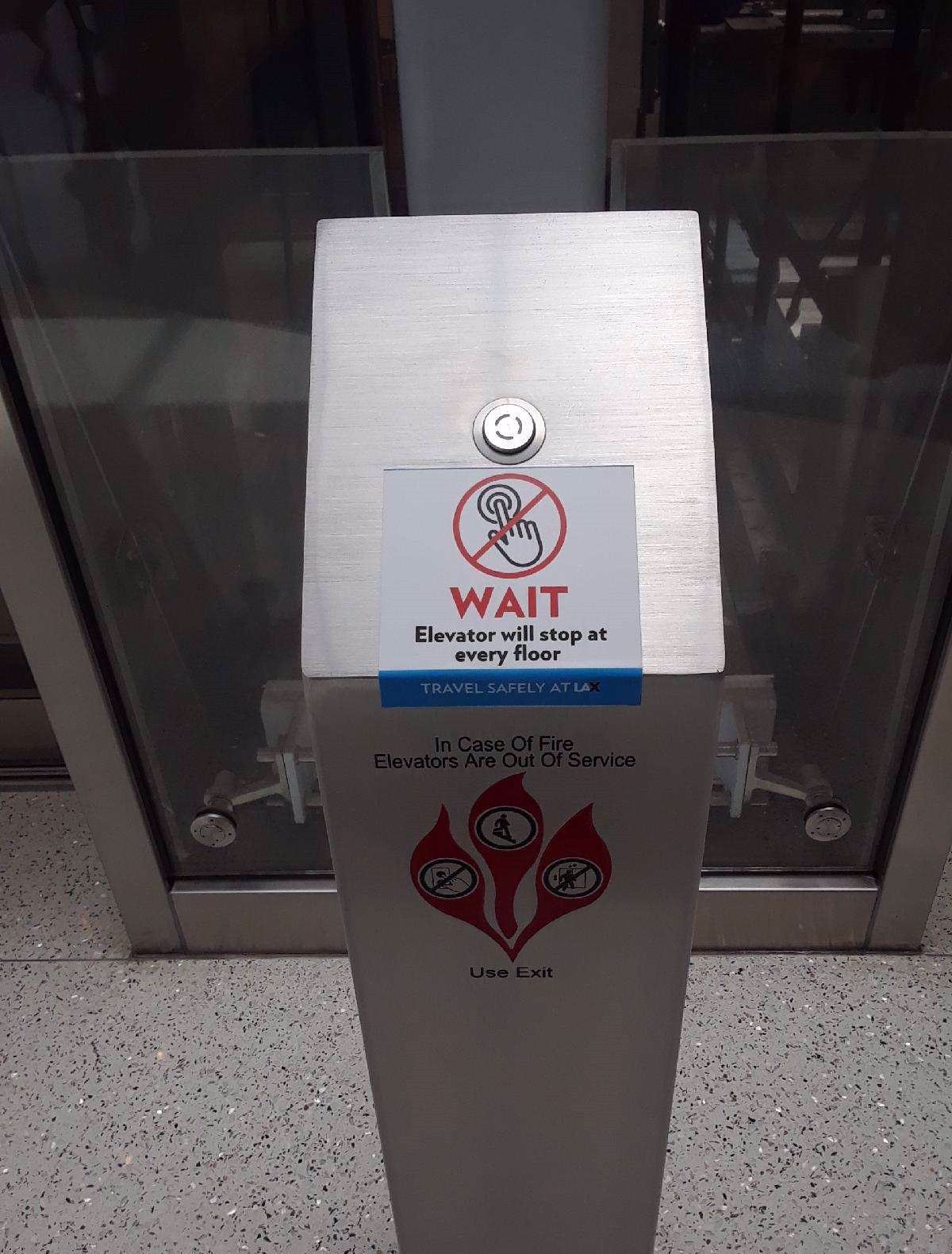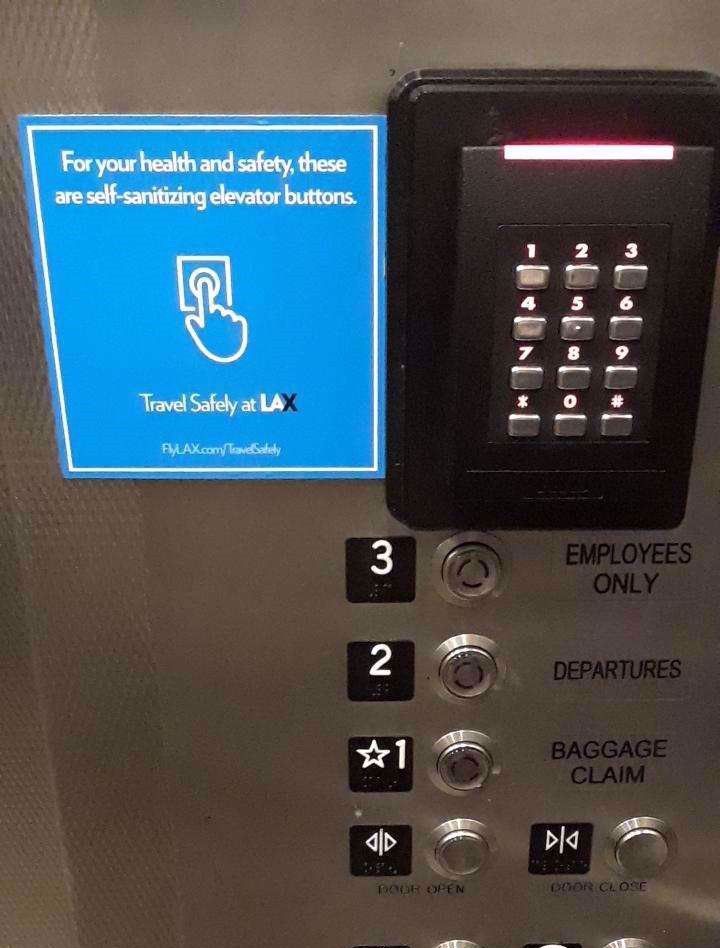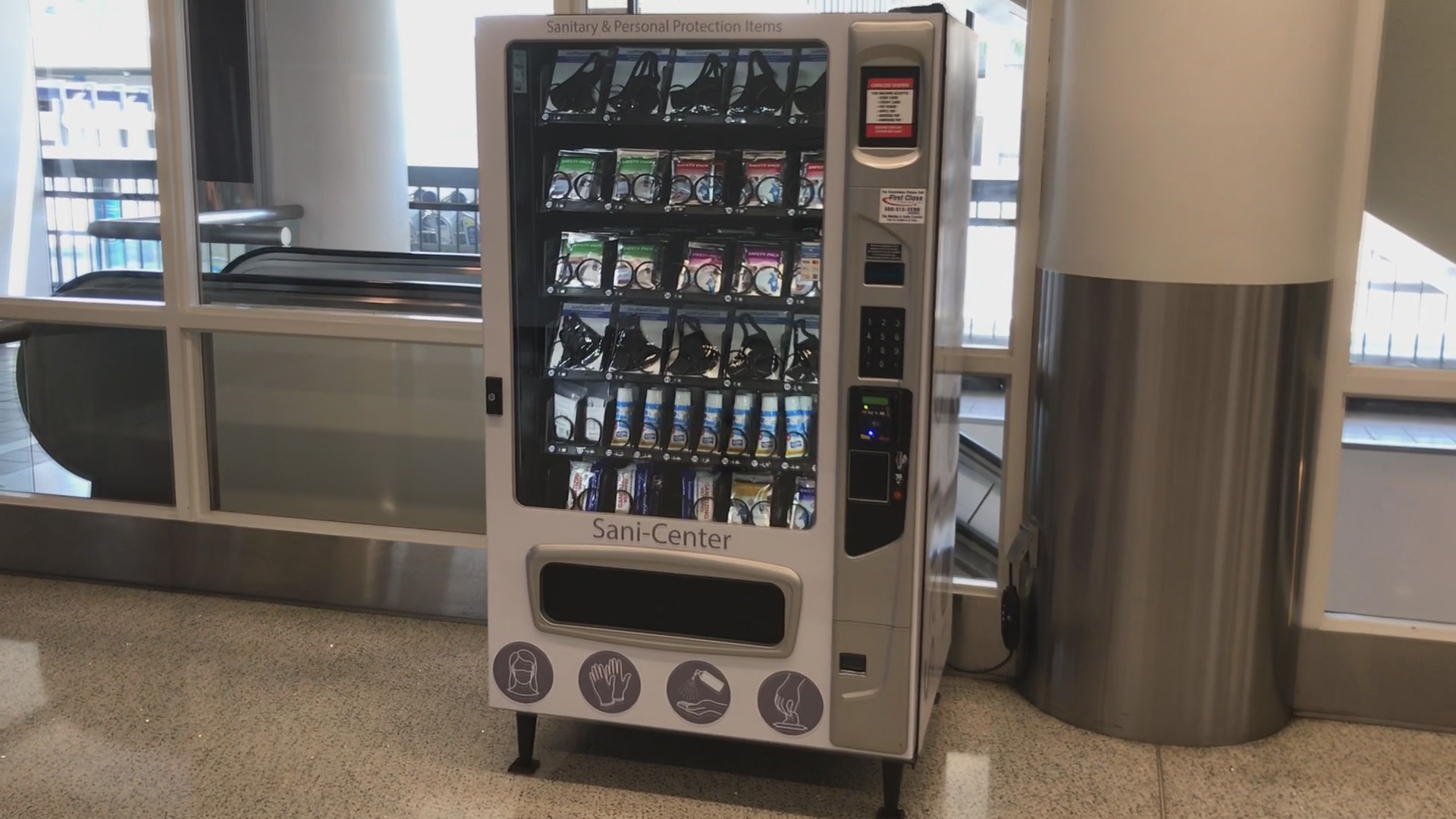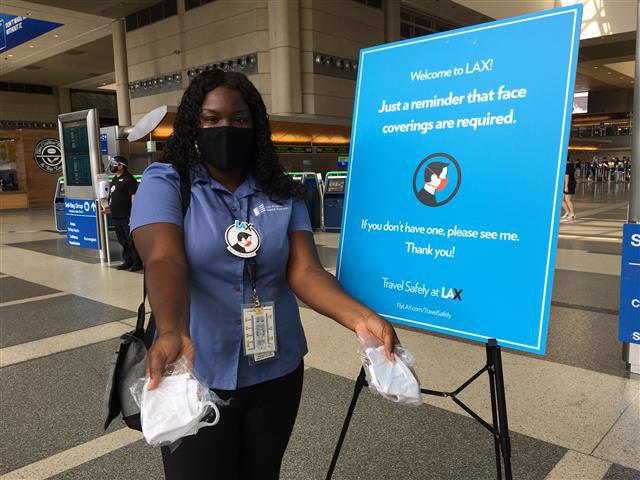|
|
FOR IMMEDIATE RELEASE
Sept. 1, 2020
CONTACT
LAX Public Relations
(424) 646-5430
|
|
|
|
|
LOS ANGELES INTERNATIONAL AIRPORT NOW OFFERS TOUCHLESS EXPERIENCES FROM CURB TO GATE
|
|
|
From virtual assistance to touch-free kiosks, LAX
innovations improve guest experience, keep guests and employees safe and healthy
|
|
|
|
(Los Angeles, CA) Just ahead of the Labor Day holiday, Los Angeles World Airports (LAWA) is providing travelers with an increasingly touch-free experience through cutting-edge technology, physical changes and policies that are designed to help people Travel Safely at Los Angeles International Airport (LAX). As more passengers begin returning to the skies, LAX is also providing technology and improvements that are creating a more comfortable, seamless and digitally based airport journey.
"At LAWA, new technology is making our facilities more touchless, clean and easier to navigate as we welcome more travelers back to the skies," said Justin Erbacci, Chief Executive Officer, LAWA. "We are aggressively creating a touch-free journey from the curb to the gate, setting the standard for a reimagined airport experience."
While passenger traffic is still down substantially from the same time in 2019, the Labor Day holiday has the potential to see an increased number of air travelers compared to the past several months. Here's a look at changes and new technology that passengers should expect at LAX if they have not traveled recently:
|
|
|
Turn Your Phone Into a Check-in Kiosk Remote Control
Guests traveling out of the Tom Bradley International Terminal now have the option of using their personal mobile device to control one of a dozen airline check-in kiosks within the Departures Level.
Passengers simply approach one of the designated kiosks, located in Aisle A of the terminal, and connect to a designated Wi-Fi service. Once connected, guests use the camera app on their phone to scan a unique QR code on the kiosk in front of them, and their phone will become a trackpad to control the kiosk. This innovative service, a first in the United States developed by the aviation technology company SITA, prevents travelers from having to touch the screen on the kiosk, instead putting control over the check-in process into their own device.
The service is available for any of the nearly two-dozen airlines that participate in the common-use check-in kiosk program.
|
|
|
Touchless Faucets, Hands-Free Drinking Fountains and Hand Sanitizer Stations
LAX plumbers have retrofitted traditional, manually operated drinking fountains in Terminal 4 to create a touchless system. To activate the drinking fountain, guests simply approach the device and lean over to begin the flow of water. Plumbers are installing an additional system in Terminal 5 as part of a pilot program to test the systems' reliability and functionality within the airport environment.
Plumbers are also converting more restroom faucets to touchless systems. Nearly half of the approximately 240 touch-type faucets have been replaced to date. LAWA requires touchless restroom faucets in all new construction.
Additionally, crews recently installed more than 250 hand sanitizer stations throughout the airport. An additional 100 stations will be installed this week, along with 18 sanitizing wipe dispensers located at the Smarte Carte rental stations.
|
|
|
U.S. Customs and Border Protection Speeds Up Entry and Exit
U.S. Customs and Border Protection (CBP) at LAX is piloting biometric technology that uses cameras to speed up entry and exit from the United States.
For departing passengers, CBP will use biometric facial comparison technology to match a new photo against images that the guest has already voluntarily provided to the government, such as a passport, to help verify a person's identity prior to boarding select international flights. Biometric exit enhances security and streamlines the departure process for international travelers.
For those entering the country using Global Entry, a CBP Trusted Traveler Program for low-risk, preapproved travelers, a biometric kiosk prevents the need for passengers to swipe a passport or provide fingerprints at the time of entry. The new Global Entry kiosks have effectively reduced processing time of pre-approved members by nearly 90 percent, from 45 seconds to less than 6 seconds per traveler. Global Entry members bypass traditional CBP inspection lines and use an automated kiosk to complete their admission to the United States.
Eligible international passengers are also encouraged to take advantage of Mobile Passport as a way to avoid touching an entry kiosk and speeding through the U.S. Customs arrival process. The free and secure Mobile Passport Control (MPC) app allows arriving U.S. and Canadian citizens to skip the traditional paper forms and save significant time when entering the country at LAX.
In many cases, the passengers who are using Mobile Passport at LAX wait only about one minute to see a customs officer. Click here to download the Mobile Passport app.
|
|
|
Virtual Assistance Available
The Virtual Assistance pilot program, which is now available in Terminal 2, allows airport guests to have real-time conversations with a customer service professional over a touch-free tablet system installed at the information booth.
As guests approach the information booth located on Lower/Arrivals Level, they will find a tablet connected to a Guest Experience Member (GEM) or other trained volunteer waiting to help them from a remote location. GEMs are available to answer questions between 7 a.m. and 10:30 p.m. daily. The live video feed means guests can simply walk up to a tablet and begin a conversation as needed.
Some of the services offered at these screens include help with directions, ground transportation, shopping and dining recommendations and more. If guests require immediate attention from medical or law enforcement personnel, the representative can request their presence on the guest’s behalf. Should a guest require translation assistance in a foreign language, the representative will contact LAX's translation service.
Click here to watch a video of the new Virtual Assistance in action.
|
|
|
Send Restroom Feedback From Your Phone
All LAX restrooms now include the ability for guests to provide immediate feedback about the facility's cleanliness, need for restocking or other maintenance from any smartphone.
By pointing their smartphone camera at one of the QR codes on new signs installed at all restrooms, airport guests can provide fast feedback about the restroom via a drop-down menu or open comment option. Guests can also include a photo of the issue. All of this information is delivered to a maintenance dispatch center in real time.
While dedicated LAX crews are deep-cleaning all restrooms throughout the day, using hospital-grade products, this new feedback service is designed to quickly address any immediate issues.
The new service is available in all 213 restrooms at LAX, including all-gender and nursing rooms.
|
|
|
Touchless Document Scanners at TSA
LAX is among 50 U.S. airports in which the Transportation Security Administration (TSA) is using new Credential Authentication Technology (CAT) in which passengers insert their photo ID into a reader without needing to exchange documents or show a boarding pass at security screening checkpoints.
A total of 30 new scanners are available in each LAX terminal, although not in every lane yet. If a CAT unit is available, travelers are encouraged to insert their own driver's license or ID into the machine. In doing so, the TSA officer does not need to see the traveler’s boarding pass and will not come in contact with the ID. Guests who prefer to scan their boarding pass and show an ID may continue to do so.
The CAT automatically verifies identification documents passengers present to TSA during the security checkpoint screening process. The CAT system also confirms a passenger’s flight information by cross-referencing it against the Secure Flight Database. The CAT unit scans a passenger’s photo ID to verify the authenticity of the document. This process works by analyzing security features embedded in the photo IDs and comparing the features against a data library loaded on the unit.
Even with TSA’s use of CAT, travelers still need to check in with their airline and show their boarding pass to the airline gate agent before boarding their flight. Each unit costs approximately $27,000 and is programmed to scan more than 2,500 different types of IDs.
|
|
|
Protective Barriers Keep People Safe
To help reduce physical contact throughout the airport, LAX and its partners have installed hundreds of new Plexiglas and acrylic barriers. LAX crews have installed more than 700 Plexiglas barriers at airline ticket counters and other locations around the airport.
As part of its national "Stay Healthy, Stay Secure" campaign, the Transportation Security Administration (TSA) has installed new acrylic barriers and associated equipment at TSA’s security checkpoints at LAX. These installations provide additional physical barriers between TSA officers and the traveling public at document checking podiums and along conveyor belts.
This new style of acrylic barrier can be seen in Terminals 1, 2, 4, 5, 6, 7 and the Tom Bradley International Terminal in areas where passengers prepare to put their carry-on items through the X-ray scanners and in the bag search areas. Other areas of the security checkpoints will retain the Plexiglas barriers that were installed earlier this year.
Learn more about the new TSA barriers here.
|
|
|
|
Creating Touchless Elevators
As a pilot program, elevators within the LAX Terminal 1 are now programmed to stop automatically at every floor, preventing the need for guests to touch individual buttons.
At the same time, the airport is testing new NanoSeptic button covers, which provide a self-cleaning anti-bacterial surface that is applied over high-touch surfaces such as elevator buttons. These special applications are currently being tested in elevators inside Terminal 1 and the Tom Bradley International Terminal.
Signage on elevators will indicate whether two or three people are allowed in the elevator at a time, depending on the size of the elevator. Family groups are exempt from this limit. LAX requests that those who are able to take an escalator or stairs do so, so the elevators can be reserved for those who need them. Guests are also reminded to keep at least six feet distance from other guests as they wait for their ride.
|
|
|
Personal Protective Equipment Vending Machines with Touch-Free Payment
Guests at LAX now have access to personal protective equipment (PPE) such as hand sanitizer, face coverings and gloves via convenient vending machines located in the ticketing areas of most terminals. Each machine offers touch-free payment including Apple Pay, Google Pay and Samsung Pay.
The new vending machines are available in pre-security areas of the Upper/Departures Level inside Terminals 1, 2, 4, 5, 6, 7 and the Tom Bradley International Terminal. Each vending machine also has an anti-microbial shield installed on hard surfaces, which provides long-lasting anti-bacterial protection.
All of the items available in the machines, including hand sanitizer, disposable face coverings and nitrile gloves, are TSA compliant and can be brought through any of the TSA security screening checkpoints. Other products available include hygiene kits, thermometers, Ultraviolet-C sanitizers and over-the-counter medications. Products may vary by location. Click here for a video of the new PPE vending machines.
|
|
|
|
Other New Pilots and Programs
UV-C Lights
The airport is also piloting the use of UV-C lights in public areas. One pilot includes installing UV-C lights in a men’s restroom located in the Terminal 1 baggage claim area. The lights are designed to destroy pathogens that may be in the air and not yet treated by the UV-C lights within the air-handling units. The second pilot includes installing UV-C lights within escalator handrails at Terminal 1 and at the Tom Bradley International Terminal.
Need a face covering?
Face coverings are required at LAX, and we now have Travel Safely Ambassadors working in Terminal 1 and the Tom Bradley International Terminal to remind guests and provide a free face covering if needed. Click here to watch a video of the LAX Travel Safely Ambassadors in action.
|
|
|
|
Here are some additional travel tips and things that may have changed since the last time you traveled at LAX:
Check your flight status and arrive early: Checking your flight status before heading to the airport is important as some gate assignments may have changed. It's also a good idea to check your airline's latest policies, and to see whether digital boarding passes are available in place of printed ones. Arrive at least two hours before your departure time.
Bring your face covering: Before heading to the airport, it's important that passengers are prepared to wear a face covering at all times while at the airport, and likely while onboard their aircraft, depending on airline policies. Click here to learn more about face coverings. The TSA officer may ask passenger to adjust or remove their face covering briefly in order to allow for verification of their identification. You may also remove a face covering to eat or drink when more than six feet away from others.
Traffic: Guests can find current traffic conditions on Twitter at @FlyLAXstats or at FlyLAX.com. Traffic conditions are predicted to be good this coming weekend, as passenger numbers remain low.
Parking: All garages in the Central Terminal Area (CTA) remain open. Lot E is temporarily closed, but there are many off-airport parking options available. Check parking availability and daily rates at FlyLAX.com.
Physical distancing measures: Signage will remind passengers to remain at least six feet distant from other guests at all areas where people congregate, including check-in, elevators, escalators and baggage claim areas. Due to physical separation, TSA lines may appear longer than usual and the screening process may take more time.
Rigorous cleaning protocols: Airport personnel deep-clean high-touch areas often, including cleaning our public areas and restrooms using virus- and bacteria-killing disinfectants. We have increased deep cleaning throughout the airport, focusing on “high touch” areas at the airport like handrails, escalators, elevator buttons and restroom doors.
Hand washing and sanitizing: Passengers are encouraged to wash their hands with hot water and soap directly before and after using the TSA checkpoints.
Shopping and dining: While some airport concessions have closed or have reduced hours due to the decline in passenger traffic, there are still many options for passengers to pick up food or purchase retail items. Restaurants are not offering table service, but are offering items to go, which can be eaten in gate areas or on aircraft. Retail businesses are also offering many grab-and-go food options, and many locations offer touchless payment options. Alcoholic beverages may also be taken into gate areas, but my not be brought onto aircraft. Remember, you can take your face covering off to eat or drink, but must put it back on when you are finished. Signs will remind passengers waiting in line at restaurants about maintaining physical distance. Passengers can avoid the line altogether at some restaurants by ordering through LAXshopdine.com.
|
|
|
About Los Angeles International Airport (LAX)
LAX, the third-busiest airport in the world and second busiest in the United States in 2019, is in the midst of a $14.3-billion capital improvement program that will touch on all nine passenger terminals and build new facilities, including an Automated People Mover (APM) train, Consolidated Rent-A-Car (ConRAC) facility and a 12- to 15-gate Midfield Satellite Concourse (MSC) addition to the Tom Bradley International Terminal.
In 2019, LAX served nearly 88.1 million passengers and offered an average of 700 daily nonstop flights to 113 destinations in the U.S. and 1,200 weekly nonstop flights to 91 markets in 46 countries on 72 commercial airlines.
LAX generates 620,600 jobs in Southern California, with labor income of $37.3 billion and economic output (business revenues) of more than $126.6 billion, according to an economic study based on 2014 operations. This activity added $6.2 billion to local and state revenues and $8.7 billion in federal tax revenues. The study also reported that LAX's ongoing capital improvement program creates an additional 121,640 annual jobs with labor income of $7.6 billion and economic output of $20.3 billion; $966 million in state and local taxes; and $1.6 billion in federal tax revenues.
LAX is part of a system of two Southern California airports – along with Van Nuys general aviation – that are owned and operated by Los Angeles World Airports (LAWA), a proprietary department of the City of Los Angeles that receives no funding from the City's general fund.
LAWA is leading the aviation industry in sustainability practices, with initiatives related to water management, energy (electricity) management, air quality, recycling and natural resources management. In 2019, LAX received Level III ACI Airport Carbon Accreditation from Airport Councils International-Europe.
LAWA is also a leader in inclusivity, operating eight programs that provide opportunities for business enterprises including local, small, minority-owned, veteran-owned and disadvantaged firms, and working together with community partners to offer the HireLAX Apprenticeship Readiness Program, which targets local workers to make them ready for rewarding careers in the construction trades, and the Build LAX Academy, designed to prepare small contracting businesses for success when working on projects at LAX.
LAX was named a top-10 U.S. airport by SKYTRAX in 2018, and was honored as the "Most Innovative Airport for Passenger Experience" in 2019 by the American Association of Airport Executives. LAX is the second-most popular airport in the world to appear on Instagram, according to wego.com. Other recent honors have included selection as the No. 9 Best Airport (Wall Street Journal); No. 7 Best On-Time Performance for a Mega-Hub Airport (OAG); one of "The World's Best Airports for Business Travelers" (GlobeHunters); Public-Private Partnership of the Year (P3 Bulletin); Urth Caffe, Best Airport Coffee Concession of the Year (Global FAB Awards); Innovation of the Year, Consolidated Rent-A-Car Facility (ARTBA); Best Project, United Airlines Terminal 7 and 8 Redevelopment Program (Engineering News Record California); North American Public-Private Partnership Deal of the Year (IJ Global); and Innovative Transportation Solution of the Year, Automated People Mover (WTS LA).
As a covered entity under Title II of the Americans with Disabilities Act, the City of Los Angeles does not discriminate on the basis of disability and, upon request, will provide reasonable accommodation to ensure equal access to its programs, services, and activities. Alternative formats in large print, braille, audio, and other forms (if possible) will be provided upon request
# # #
|
|
|
|
|
|
|
|
|



